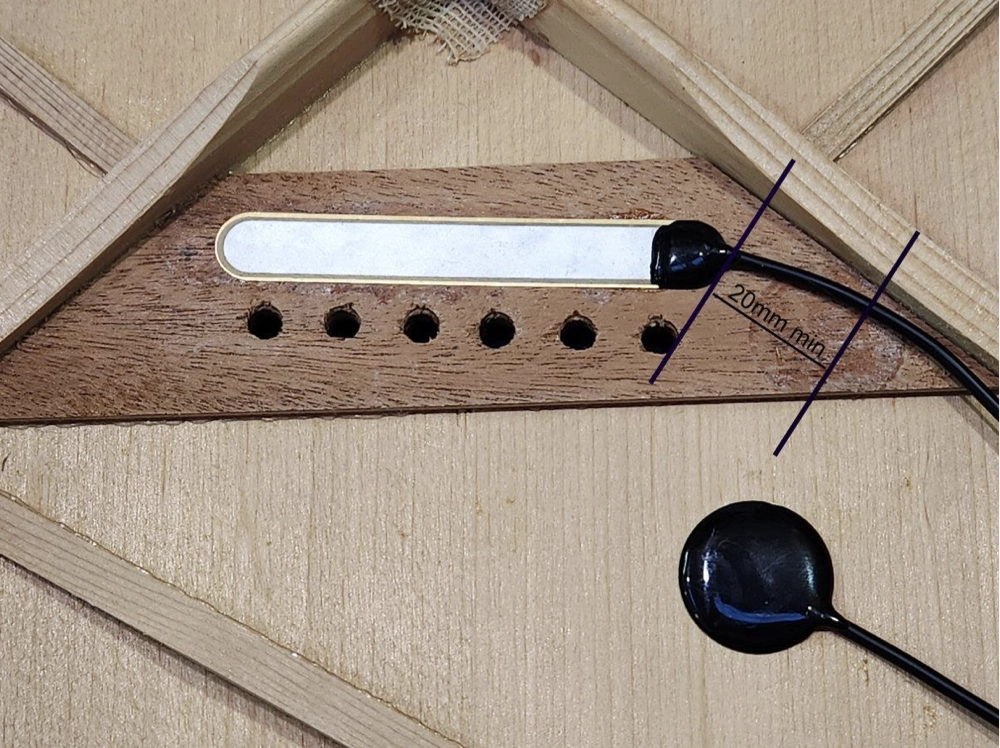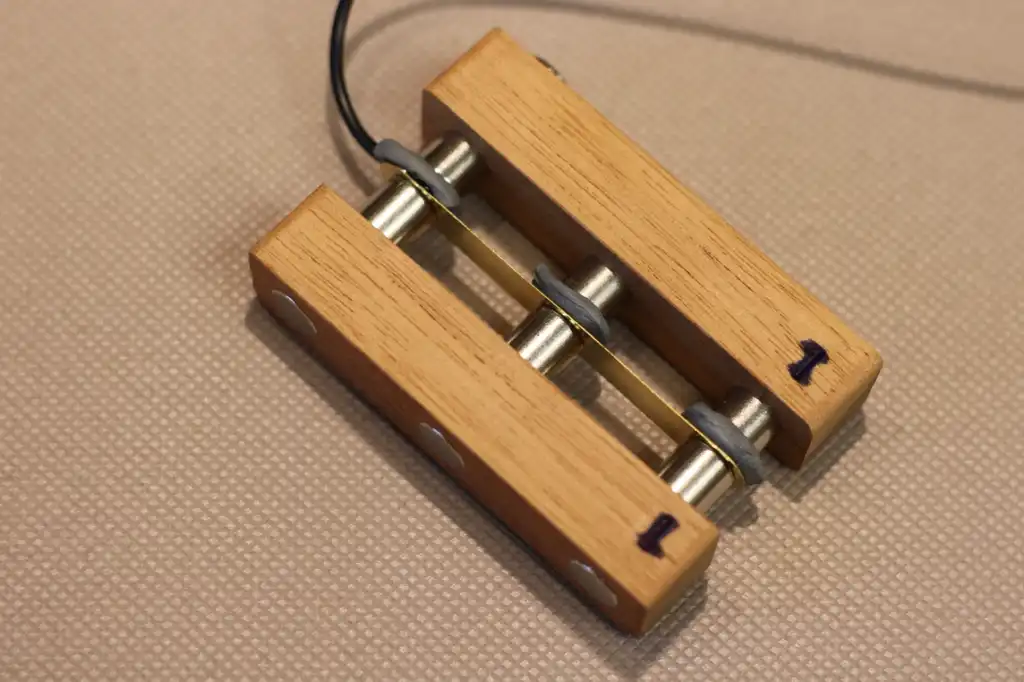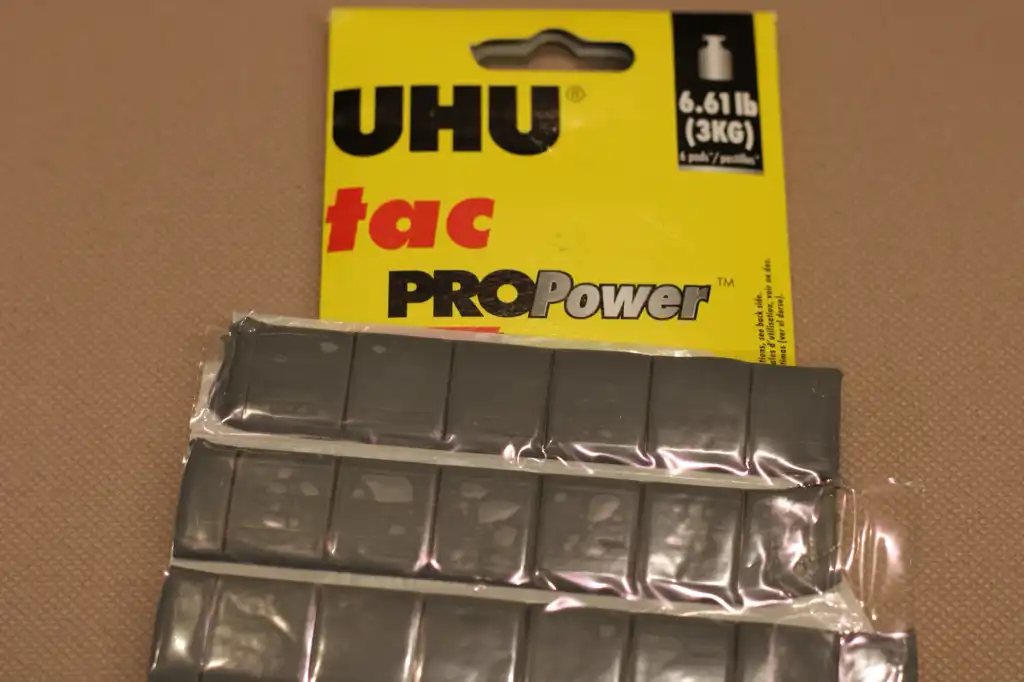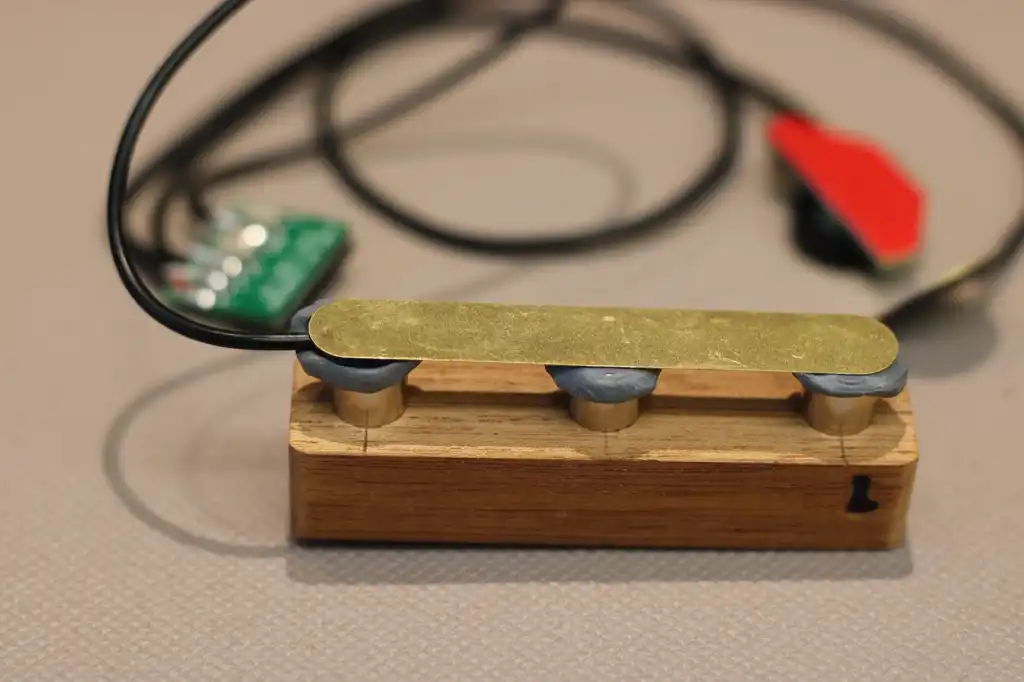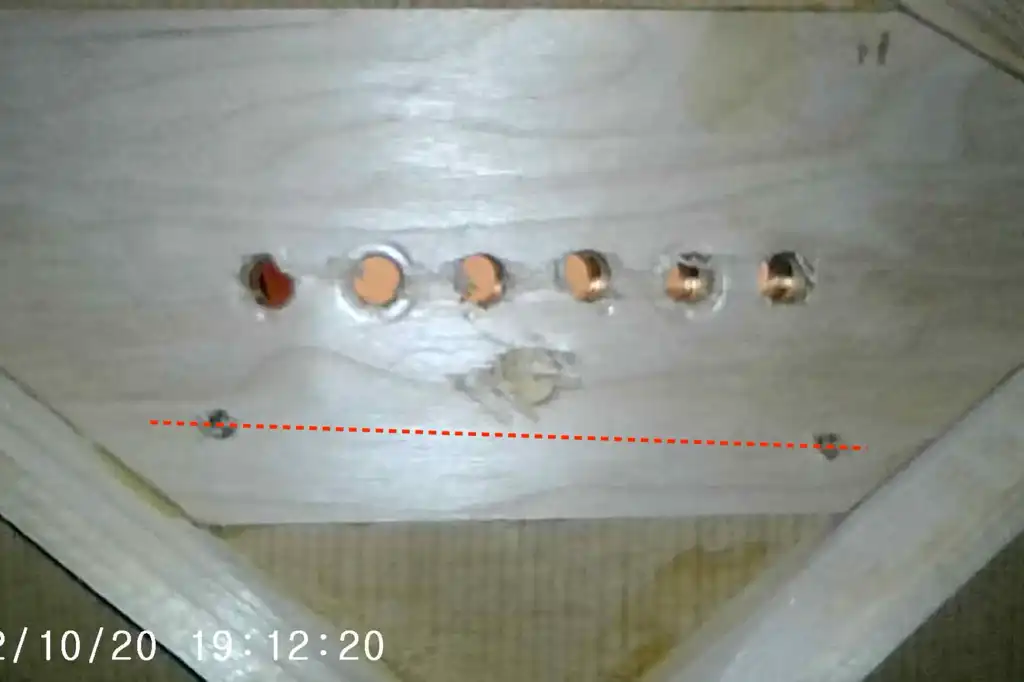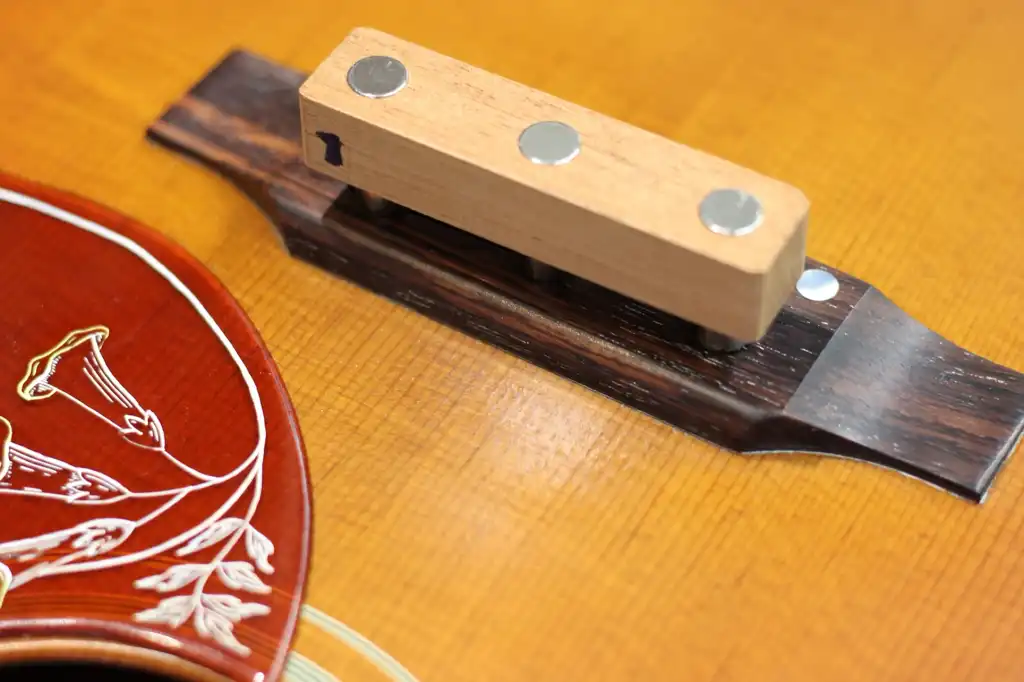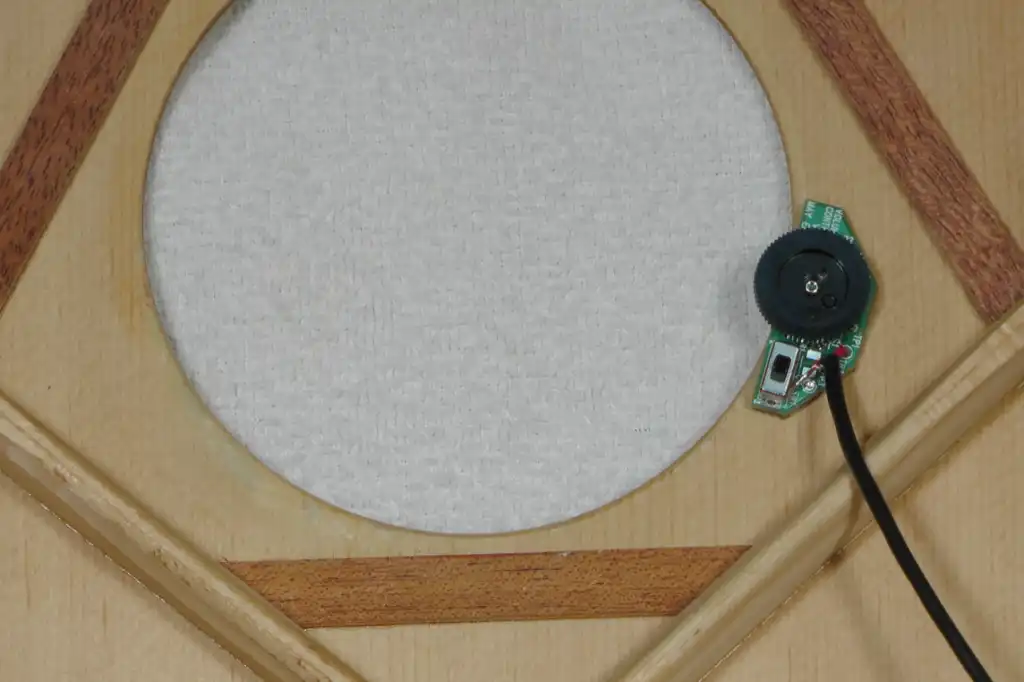James is also a partner in Audio Sprockets, creators of the ToneDexter and ToneDexter II.
The first Ultra Tonic pickup featured discs such as those made popular by K&K. The Ultra Tonic v2 included four (4) discs to be positioned directly under the saddle. That extra disc was supplied to bolster support for the 1st string (the high E), a common complaint with K&K three (3) disc systems. Additionally, a fifth (5th) large disc played the role of a feedback suppression sensor.
The current version of the Ultra Tonic, v3.2 as I write this, retains the feedback suppression sensor, but combines all four (4) discs into a long, slender plate that serves as the main sensor.
A small circuit board is integrated into the endpin jack, and includes a 12-position DIP switch array. After installation, you will need to calibrate the Ultra Tonic to your guitar in order to take advantage of the advancement in onboard feedback suppression.
This is easily accomplished by plugging your guitar into an amp, ensuring all the switches are set to "off," then walking through each of the twelve switches. You will set switch #1 to "On," strum the strings and make a mental note of the response, set switch #1 back to "Off," then set switch #2 to "On," make a mental note of the response as compared to switch #1, set switch #2 back to "Off," and continue progressing through all twelve switches, setting each switch "On," listening to the sound, then "Off" again. You will decide which switch, when set to "On," provides you with the best performance, measured by reducing "boom-i-ness" and mitigating feedback.
For those who may have a K&K Pure Mini already installed, and would like to benefit from improved 1st string response, onboard feedback suppression, and a soundhole-mounted Volume Control, JME offers a conversion kit. You can retain your discs that have been glued on to the bridgeplate, add another disc to enhance that weak 1st string, add the large disc suppression sensor, and swap out the endpin jack to get the 12 DIP switches.
An additional Ultra Tonic pickup model is available specifically for nylon string guitars.


